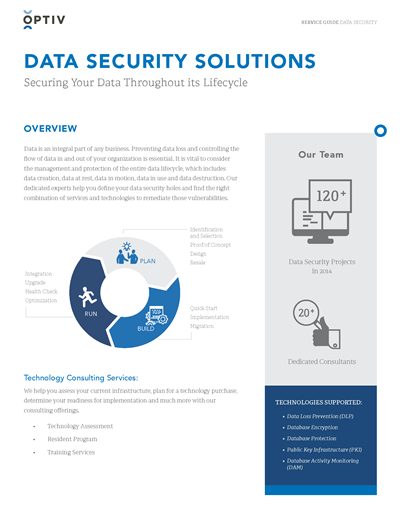Discovering the Relevance of Information Devastation in the Context of Computer System Protection Providers and Protecting Confidential Information
In a period where information breaches are increasingly common, the significance of effective information devastation can not be overstated. Organizations must embrace rigid measures to make sure that sensitive details is not just protected throughout its lifecycle but additionally emphatically gotten rid of when no much longer needed. The approaches utilized for data removal, coupled with compliance to lawful requirements, play an essential function in preserving confidentiality and trust. The implications of these practices extend beyond plain conformity, influencing a company's track record and operational stability in the electronic marketplace. What approaches can companies carry out to improve their data devastation methods?
Comprehending Information Destruction
Data damage is a crucial part of computer system safety and security that entails the permanent elimination of information from storage space gadgets to avoid unauthorized access and possible data violations. In a significantly digital landscape, companies face enhanced threats related to sensitive info being poorly accessed or exploited. Effective data destruction safeguards against these dangers, making sure that personal dataâEUR" such as consumer information, intellectual residential or commercial property, and monetary recordsâEUR" can not be recuperated after disposal.
Comprehending the significance of data damage extends past simple compliance with governing and legal structures; it is important for maintaining organizational honesty and trust. When data is poorly taken care of or improperly ruined, the repercussions can be serious, including economic loss, reputational damages, and lawful obligations.

Techniques of Data Elimination

One common approach is information cleaning, which entails overwriting existing information with arbitrary patterns numerous times. This technique renders the original data irretrievable, making it a popular choice for organizations seeking to protect secret information.
One more technique is degaussing, which utilizes a powerful magnetic area to interrupt the magnetic domain names on storage devices, efficiently removing the data. This approach is particularly effective for magnetic media yet is not applicable to solid-state drives.
Physical devastation is an additional durable technique, squashing or entailing the shredding of storage devices. This method warranties that information healing is practically impossible, making it ideal for very delicate info.
Lastly, security can function as a complementary approach to information obliteration. By encrypting data before deletion, companies can add an extra layer of safety and security, making certain that also if remnants are recouped, they stay inaccessible without the decryption trick. Each technique ought to be chosen based upon the level of information sensitivity and the details safety demands of the organization.
Legal Conformity and Data Protection
Organizations must navigate an intricate landscape of legal needs associated with data safety, especially after applying methods of information removal. Various laws, such as the General Data Protection Regulation (GDPR) and the Health And Wellness Insurance Mobility and Accountability Act (HIPAA), enforce rigorous guidelines this on just how organizations have to dispose and take care of of sensitive information. Failure to abide with these policies can cause significant lawful effects, consisting of significant fines and reputational damages.
Data damage procedures must be carefully recorded to show compliance with applicable legislations and standards. This paperwork not only serves as evidence of adherence to lawful commitments however additionally highlights a commitment to protecting sensitive details. Organizations should likewise develop clear plans regarding information retention and devastation timelines, making certain that information is not held longer than necessary.

Furthermore, routine audits and evaluations of data devastation techniques are essential to preserve conformity and adjust to progressing legal frameworks (data destruction). By proactively resolving legal demands, companies can alleviate dangers associated with data breaches and show their dedication to data protection. Ultimately, prioritizing lawful conformity in information destruction procedures is not simply a regulatory responsibility, but an essential aspect of a robust data security technique
Influence On Business Credibility
The credibility of a business can be substantially influenced by its method to information damage and management. In today's digital landscape, where data violations can take place anytime, the failing to appropriately take care of sensitive details can bring about severe effects. Organizations that inadequately take care of data damage threat subjecting personal customer info, which not just breaks personal privacy regulations but additionally erodes count on amongst stakeholders and clients.
A damaged reputation can cause decreased client commitment, as customers become hesitant to engage with an organization that has demonstrated neglect in protecting their data. Moreover, adverse publicity surrounding a data breach can have a long-term result, as potential customers may be prevented by the regarded absence of security. This can cause a straight decrease in profits and market share.
In addition, organizations that focus on information devastation as component of their safety method can improve their track record by showcasing their dedication to securing sensitive info. By adopting stringent data monitoring techniques, companies can not just alleviate dangers but also place themselves as reliable entities in their particular markets, thus strengthening their total brand name picture.
.webp)
Finest Practices for Secure Disposal
Executing ideal methods for protected disposal of information is necessary for alleviating risks related to data violations and making sure compliance with personal privacy guidelines. Organizations needs to adopt a thorough data disposal policy that outlines treatments for both digital and physical information damage.
For physical information storage devices, such as disk drives, shredding or degaussing is suggested to prevent information recovery. In addition, organizations must maintain a chain of custody paperwork during the disposal procedure, ensuring responsibility and traceability of disposed things.
For digital information, making use of software application that complies with industry requirements for information cleaning is important. This software program should overwrite existing data several times, making healing essentially difficult. It is also essential to confirm the performance of the data destruction process with audits or third-party analyses.
Training employees on protected disposal techniques includes another layer of safety and security, as human error can commonly bring about data exposure. Frequently assessing browse this site and upgrading disposal policies ensures alignment straight from the source with developing guidelines and technical innovations. By implementing these best practices, organizations can considerably decrease the danger of unauthorized data gain access to and improve their overall data protection technique.
Final Thought
Finally, data destruction is a fundamental aspect of computer security solutions that makes certain the defense of secret information from unauthorized access. Executing effective methods of information elimination, adhering to legal conformity, and identifying the influence on service track record are necessary components of a comprehensive information safety and security approach. By embracing best techniques for safe disposal, organizations can cultivate trust fund with clients and safeguard delicate data, inevitably adding to a more safe and secure digital landscape.
In an era where information breaches are significantly typical, the relevance of reliable information devastation can not be overstated.Information devastation is an important part of computer system security that entails the permanent elimination of information from storage space devices to stop unauthorized accessibility and potential information violations. Organizations ought to additionally establish clear plans regarding information retention and devastation timelines, guaranteeing that information is not held longer than necessary.
By proactively attending to legal demands, companies can mitigate dangers linked with data violations and show their commitment to data protection (data destruction). Ultimately, focusing on lawful compliance in data devastation processes is not just a regulative responsibility, yet a fundamental aspect of a robust information protection strategy